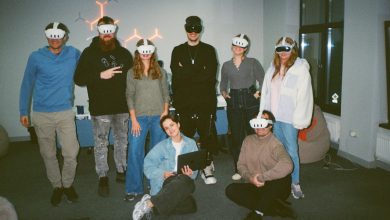
There’s a growing concern among marketers and UX designers that digital experiences are feeling increasingly formulaic and uninspired. As brands seek consistency across multiple channels, many are sacrificing originality, opting for predictable, ‘safe’ choices instead. This is leading to a phenomenon dubbed “Blandification” — a drift toward uniformity that strips away distinction and creativity from brand interactions.
While this approach may seem like a safe bet, it’s a costly misstep. Today’s consumers demand more than generic digital experiences — they crave personalised, engaging interactions tailored to their needs and interests.
But many brands shy away from this level of hyper-personalisation due to the complexity involved in getting it right.
So how exactly can marketers deliver the exceptional digital experiences that consumers are after?
The short answer? AI.
AI is changing the way brands connect with people, making digital experiences feel more personal, and engaging.
Here’s how brands can move beyond the ordinary and create experiences that truly captivate:
AI-driven personalisation: the new standard
Personalisation has been a marketing buzzword for years, yet many brands still rely on outdated, rule-based approaches that fall short. Traditional segmentation and broad personas may have worked in the past, but today’s customers expect to be recognised as unique individuals.
Scaling personalisation efforts has always been tricky. Manual methods are time-consuming, and rigid rule-based efforts often fail to keep up with evolving customer preferences. This is where AI changes the game — by constantly analysing data, learning from behaviours, and adapting in real time.
Instead of following static rules, it processes vast amounts of information to deliver content, recommendations, and experiences tailored to each customer. Rather than relying on pre-defined segments, AI picks up on patterns and predicts intent. For instance, if a user frequently engages with a particular product category, AI can adjust the messaging, promotions, and content they see — no human intervention required. This level of precision drives deeper engagement and helps build lasting brand loyalty.
AI as a creative partner, not a competitor
The rise of AI has fuelled concerns that automation will replace creativity. But in reality, AI isn’t here to take over. It’s here to enhance creativity.
Marketing teams constantly have to balance the need for both creativity and efficiency. While AI is often seen as a tool for automation, its real value lies in complementing human creativity. By analysing past campaigns, recognising brand voice, and drawing insights from performance data, AI can offer creative suggestions, refine messaging, and streamline content production.
Rather than stifling innovation, AI frees marketers to focus on what they do best — storytelling, strategic thinking, and building deeper connections with customers. With AI handling data-driven tasks and process optimisation, teams can experiment more, refine campaigns in real time, and create more impactful digital experiences.
AI powering smarter, more proactive marketing
Traditional marketing often relies on educated guesswork, but AI brings a level of precision that was once impossible. By continuously learning from new data, AI helps brands spot shifts in consumer behaviour and adjust their strategies accordingly.
Rather than reacting to trends after the fact, AI better enables proactive marketing. For example, it can anticipate customer needs based on subtle behavioural patterns — like changes in browsing habits, purchasing frequency, or engagement levels — and adjust messages accordingly. This helps brands stay one step ahead, delivering value before the customer even asks for it.
Beyond individual touchpoints, AI strengthens omnichannel consistency by seamlessly linking interactions across mobile, in-store, and online experiences. The ability to personalise at scale, without overwhelming marketing teams, deepens customer relationships and fosters long-term loyalty.
AI as the future of digital experience
AI is no longer just a tool for automation – it’s a strategic advantage for brands looking to redefine how they connect with consumers. By blending efficiency with human insight, AI facilitates seamless personalisation, optimised workflows, and enhanced creativity.
This isn’t just about doing more with less, it’s about doing it better. As AI continues to evolve, digital experiences will become more adaptive, more meaningful, and ultimately, more human. The brands that embrace this shift won’t just keep up with customer expectations, they’ll lead the way in shaping them.





